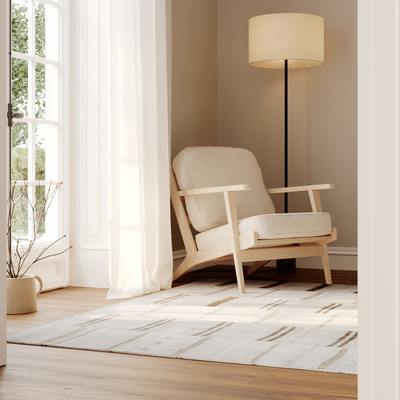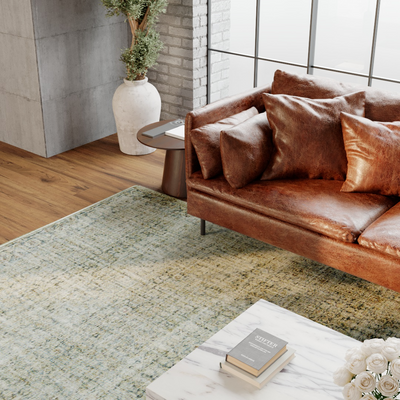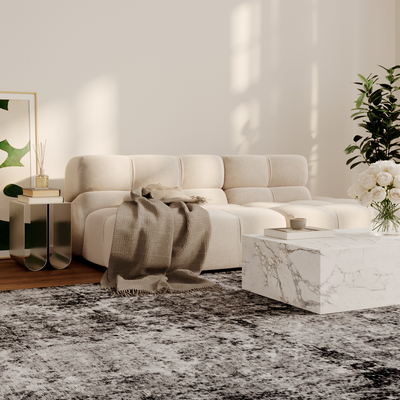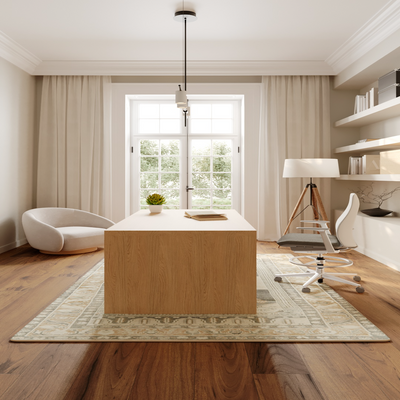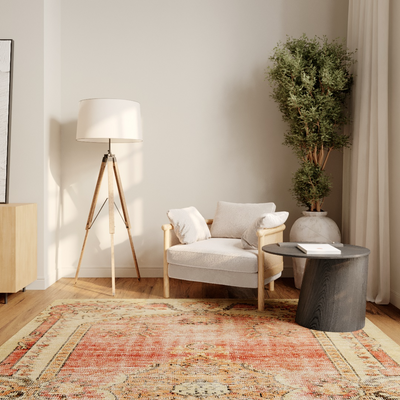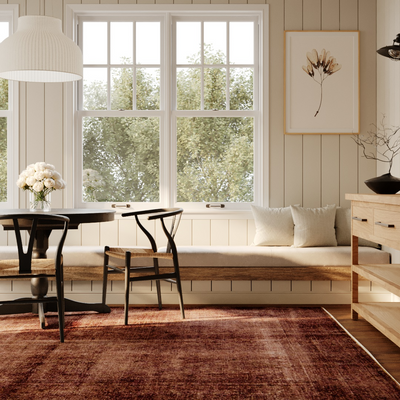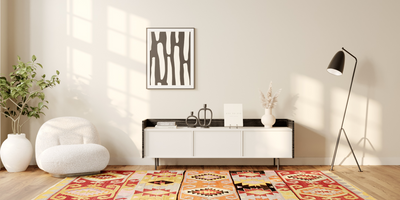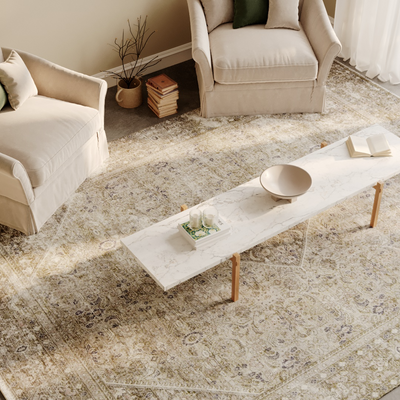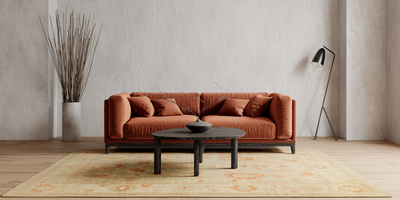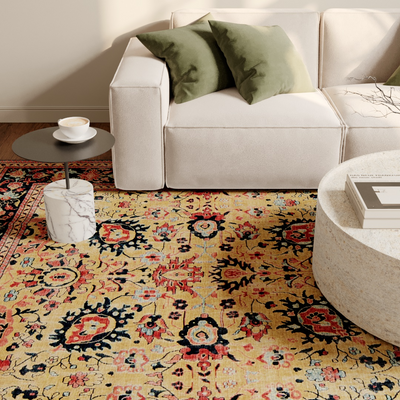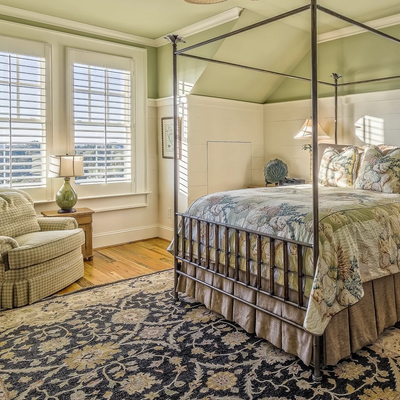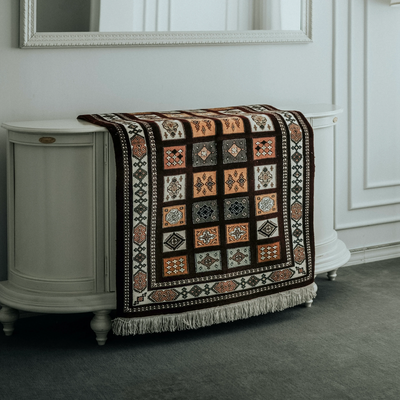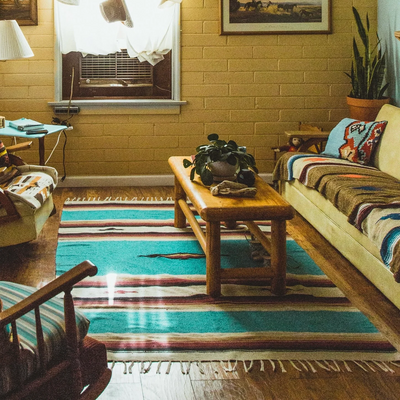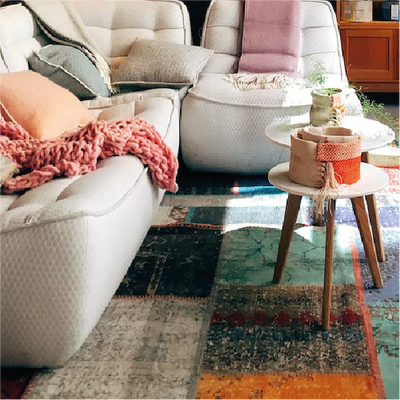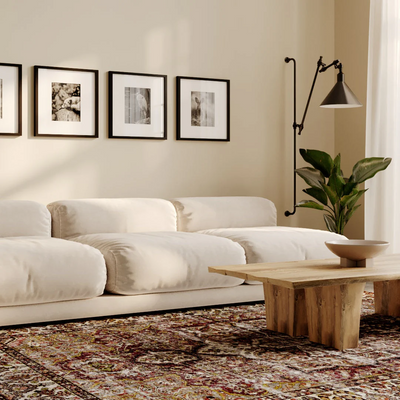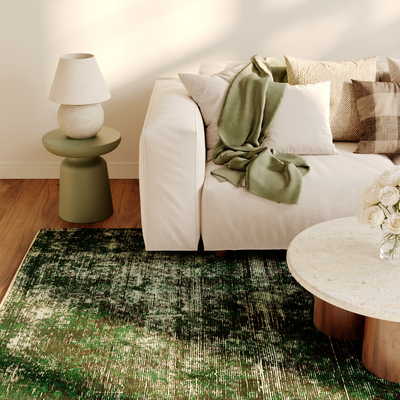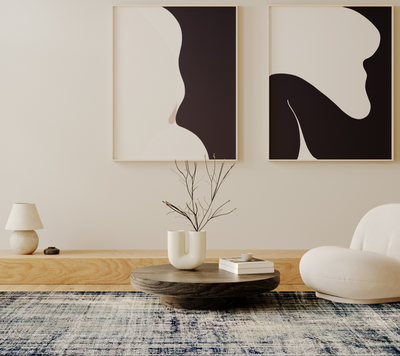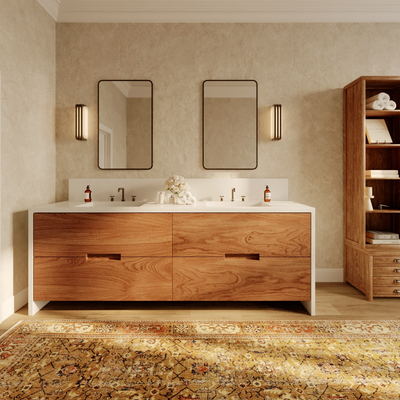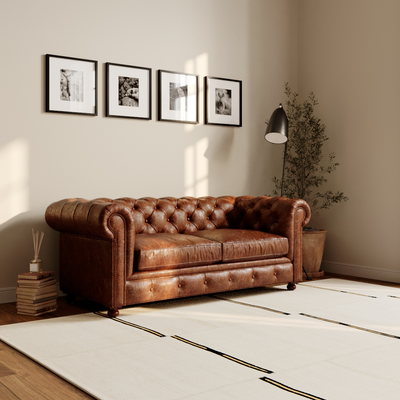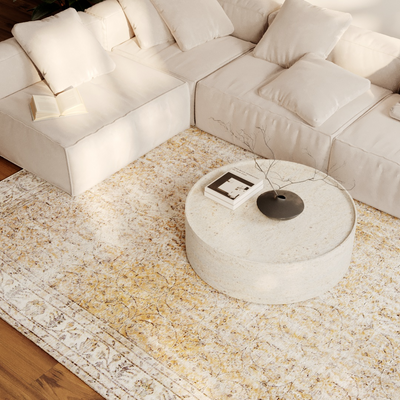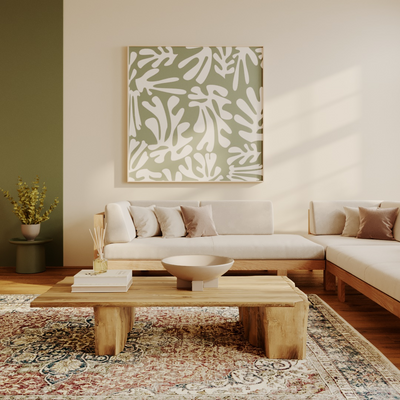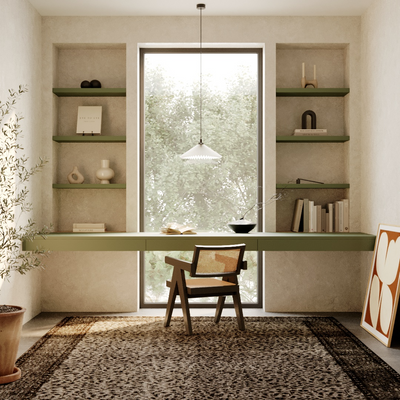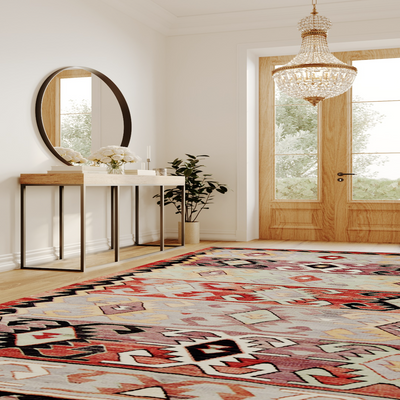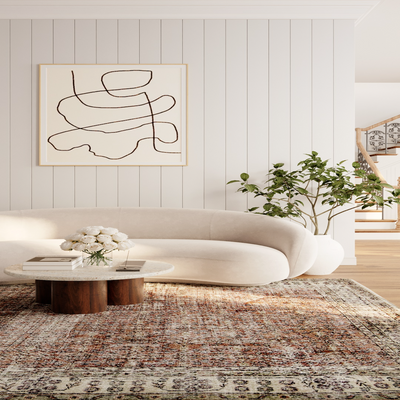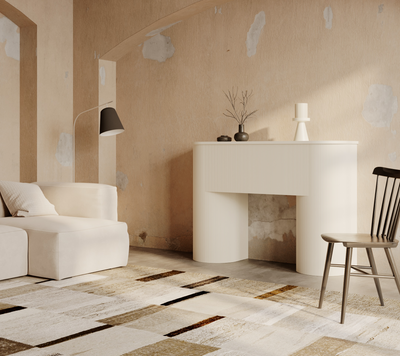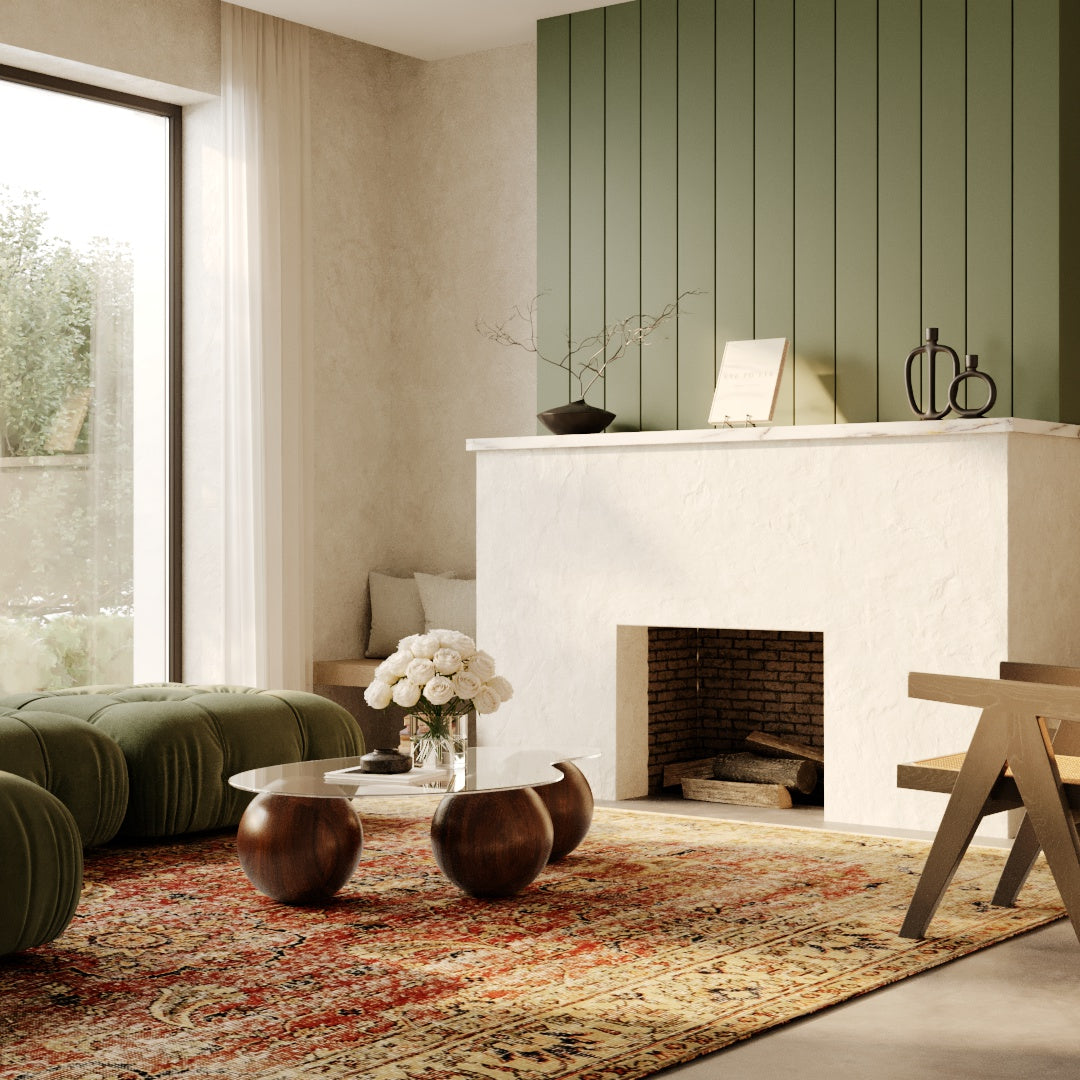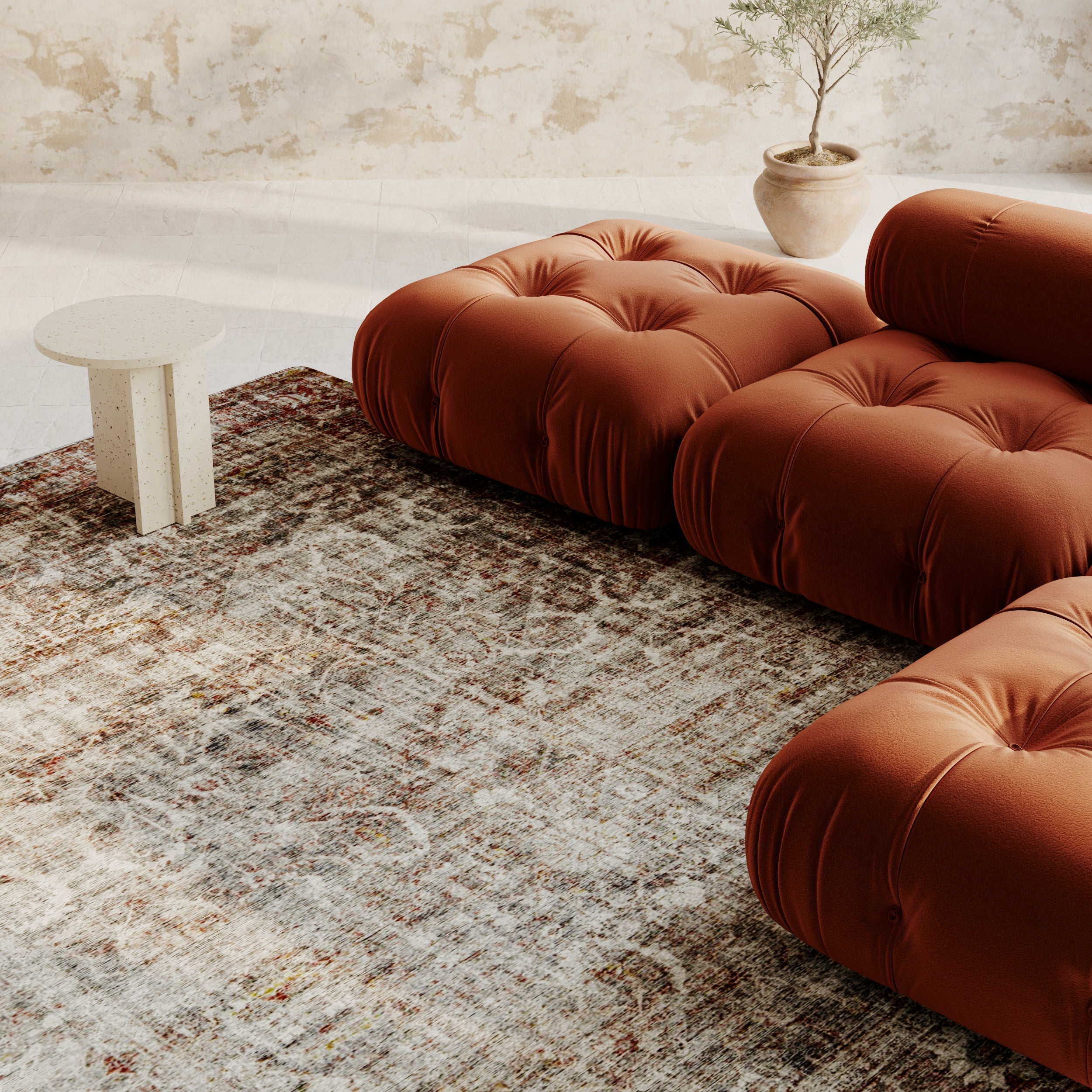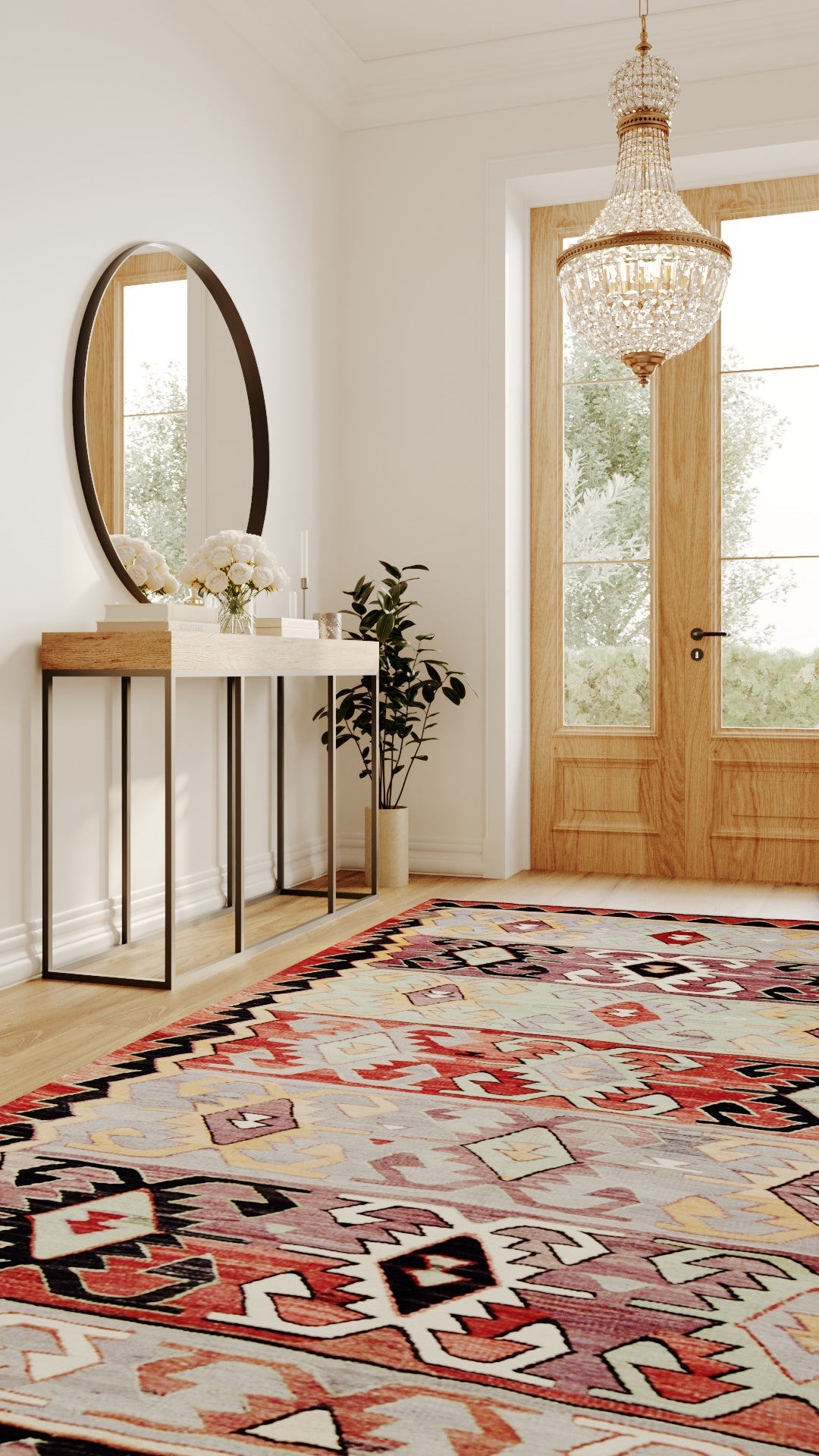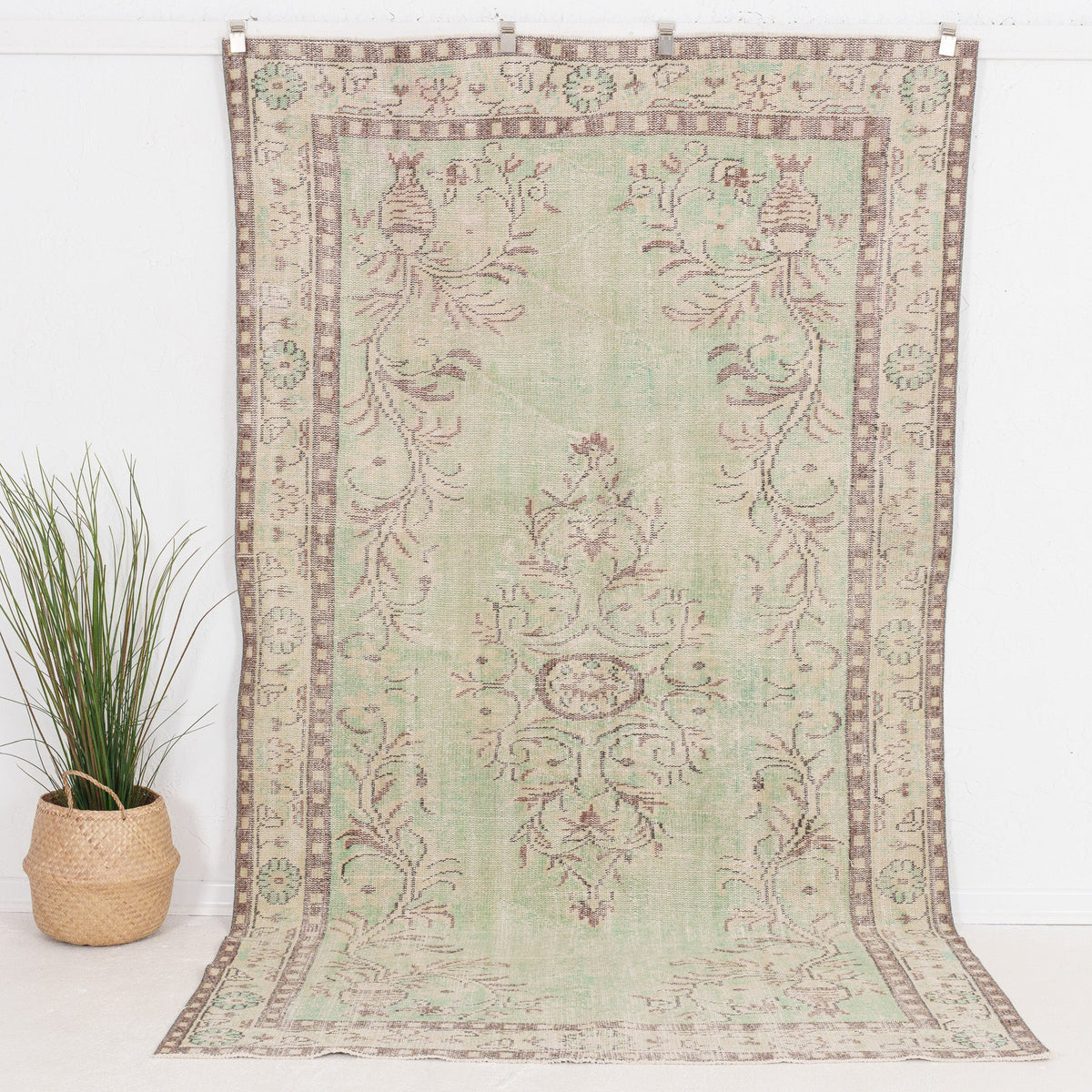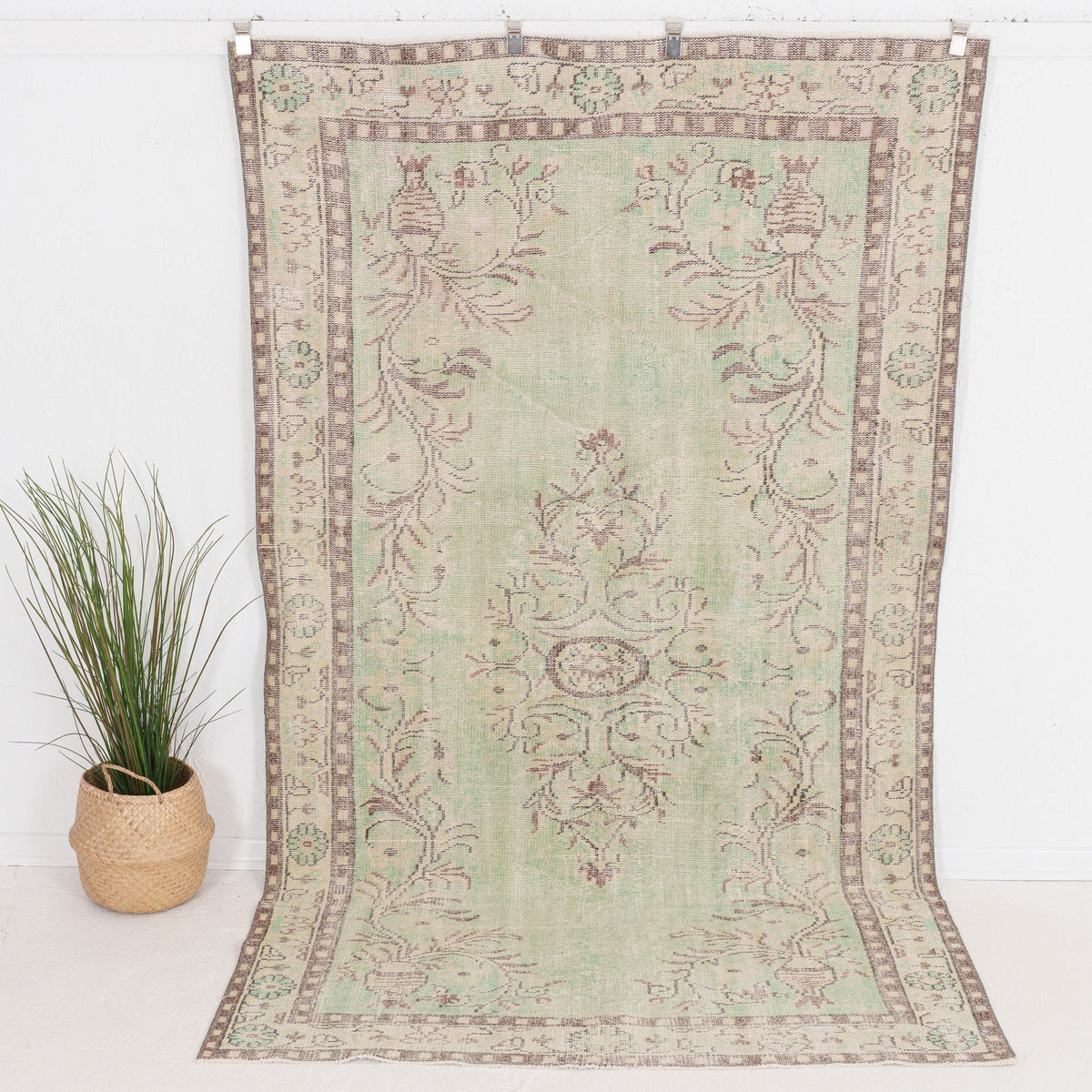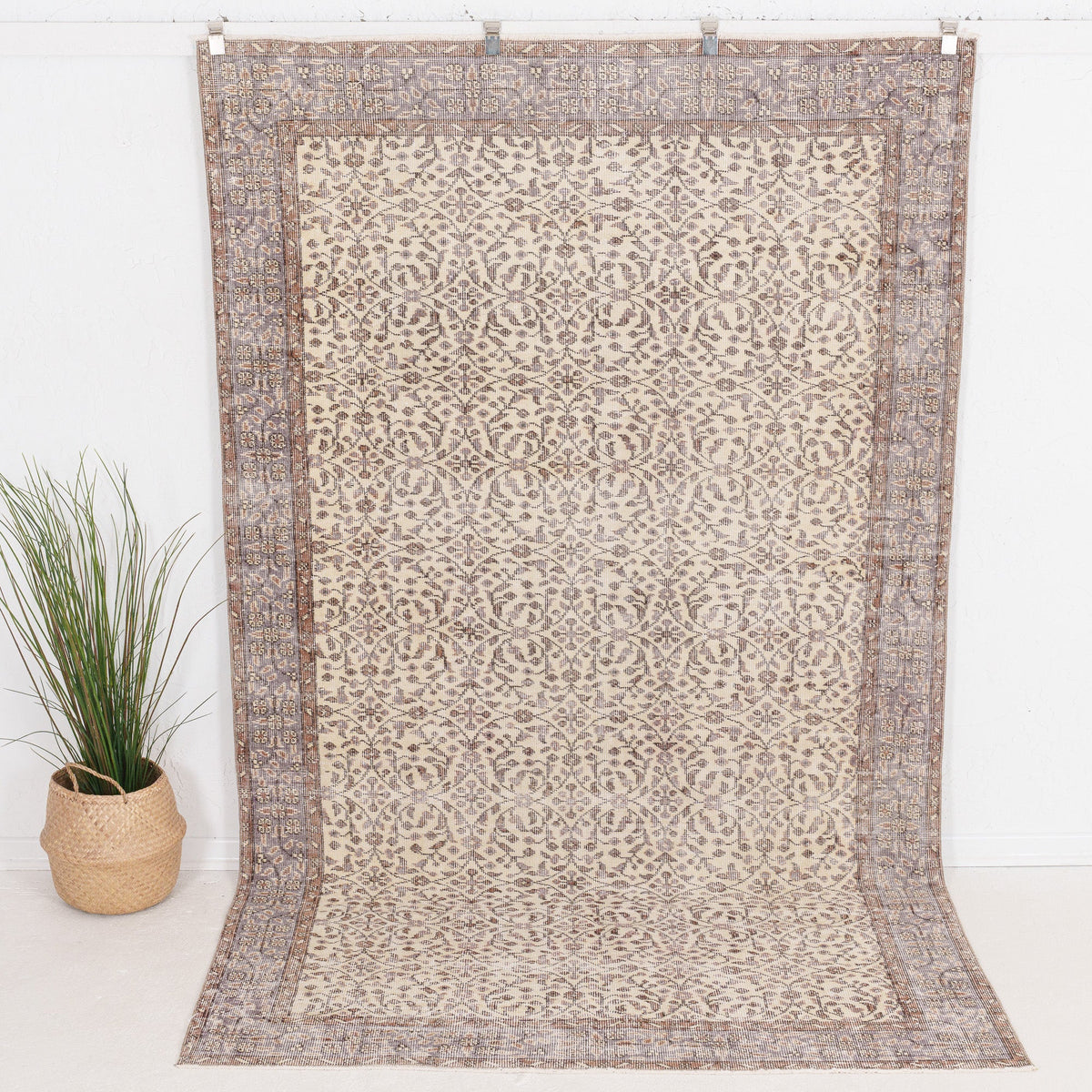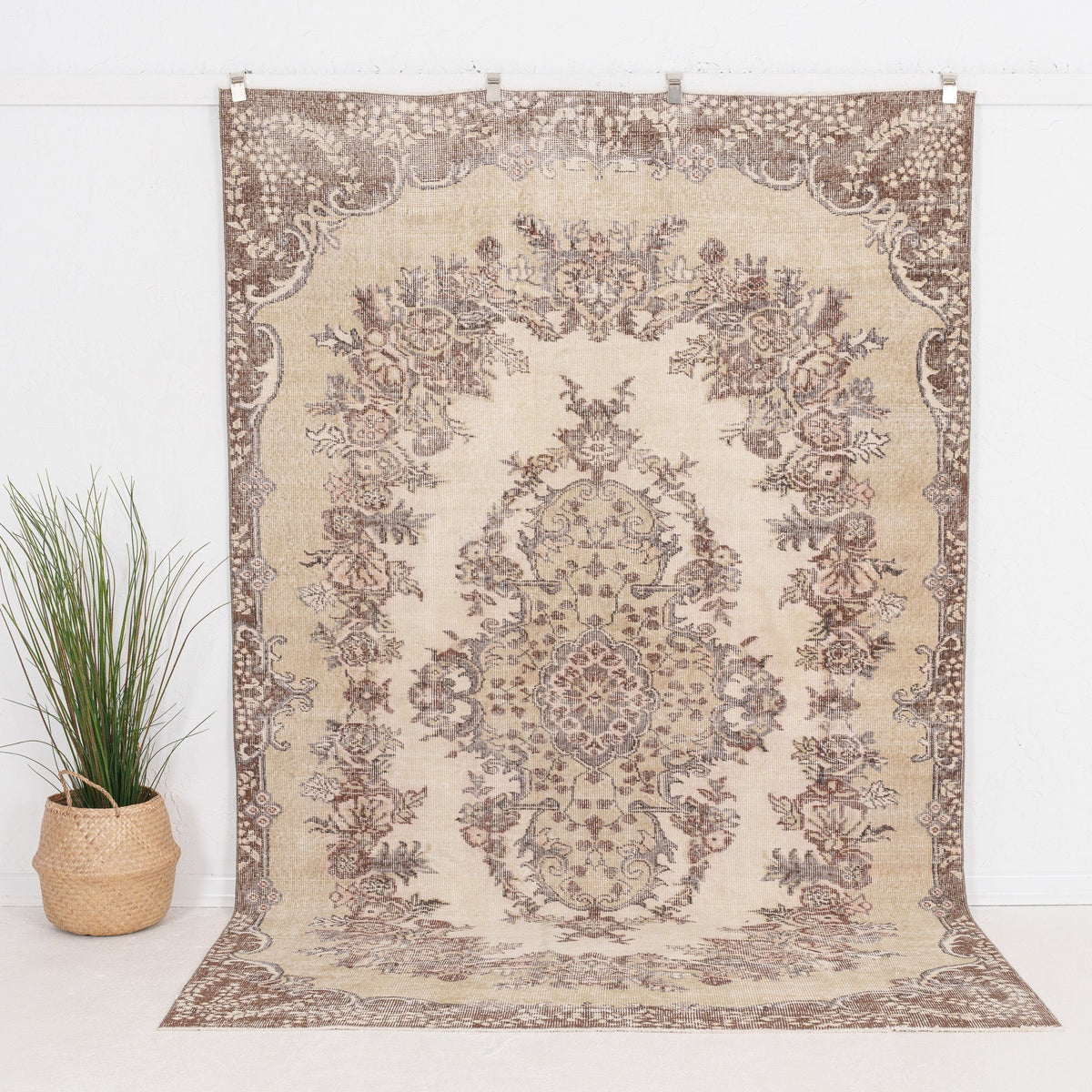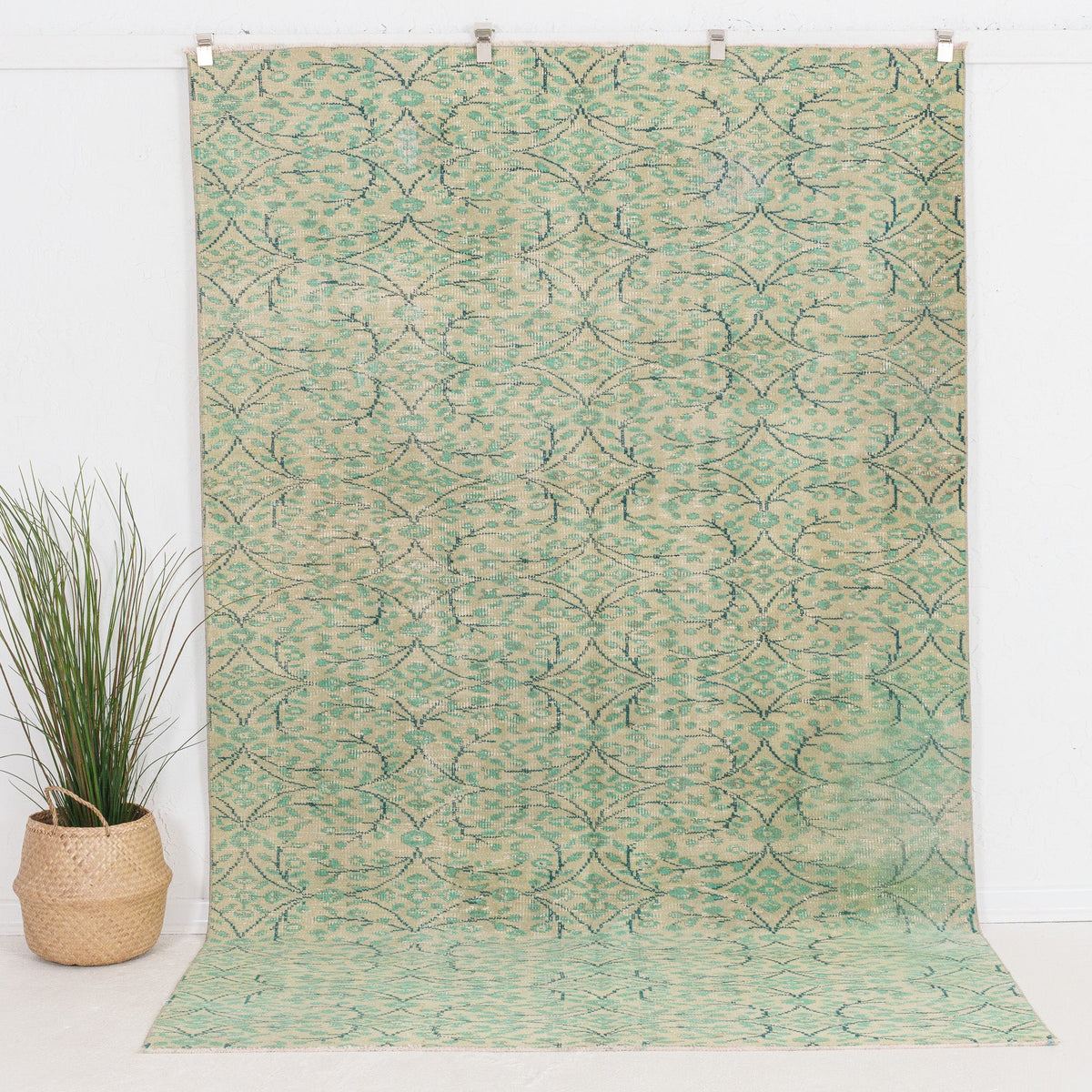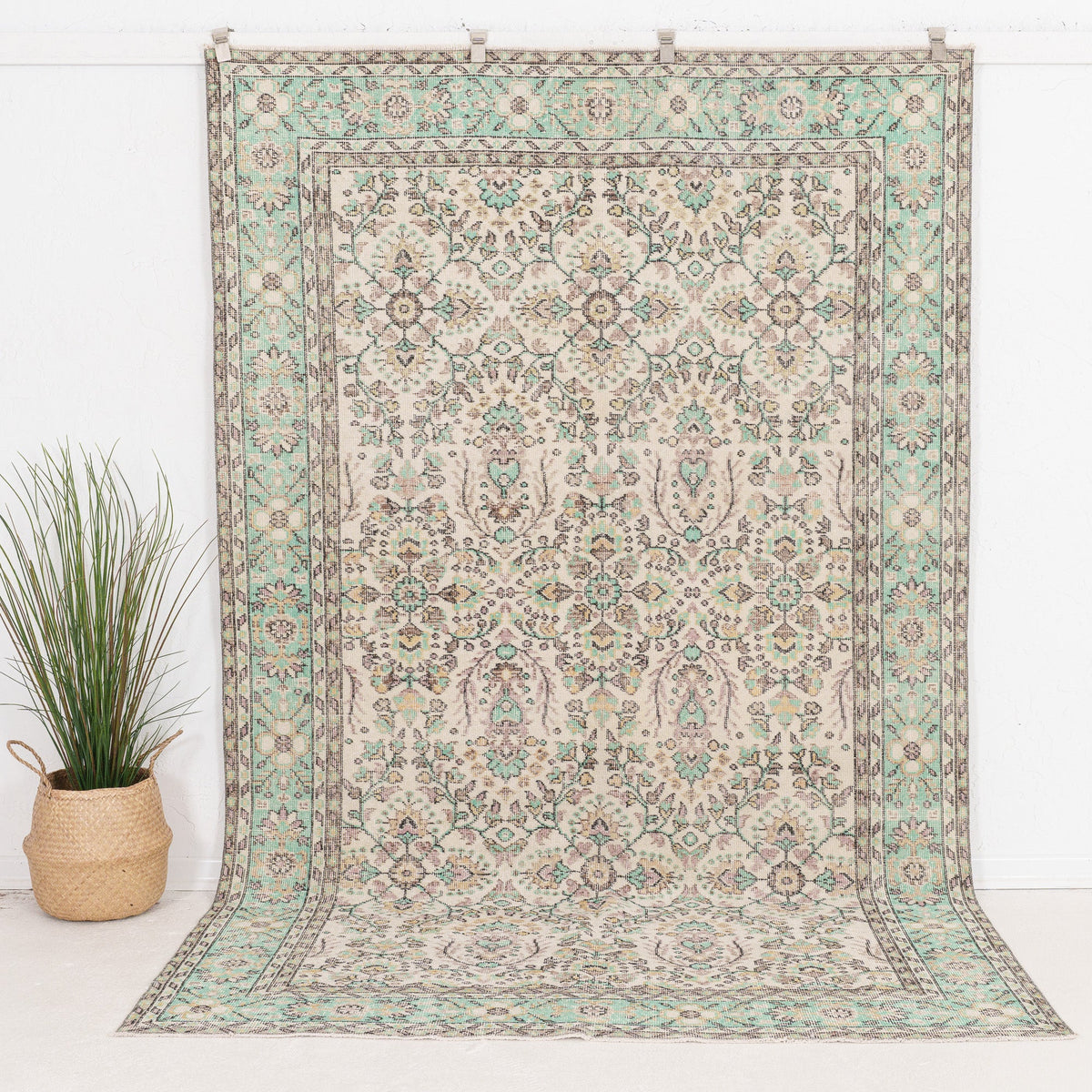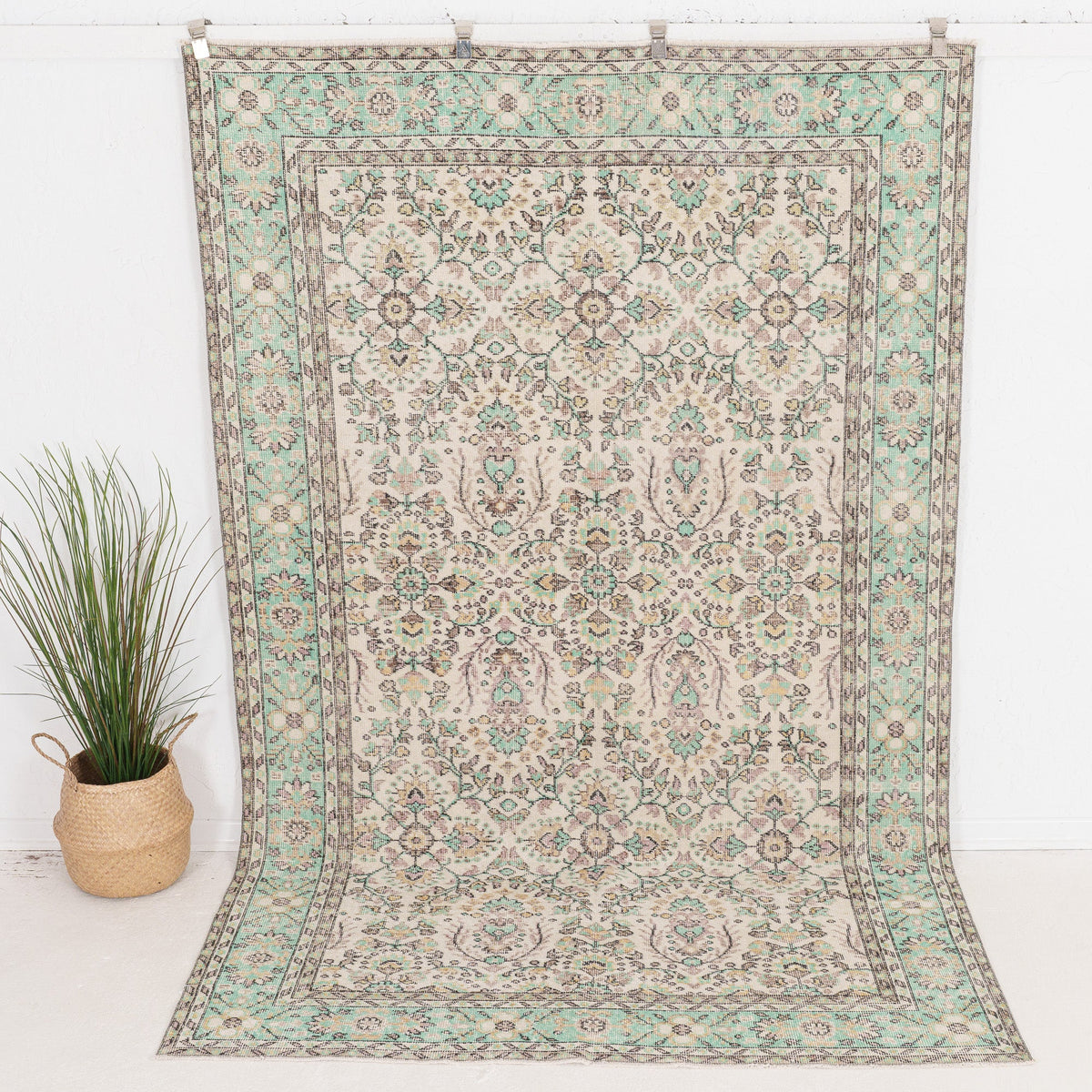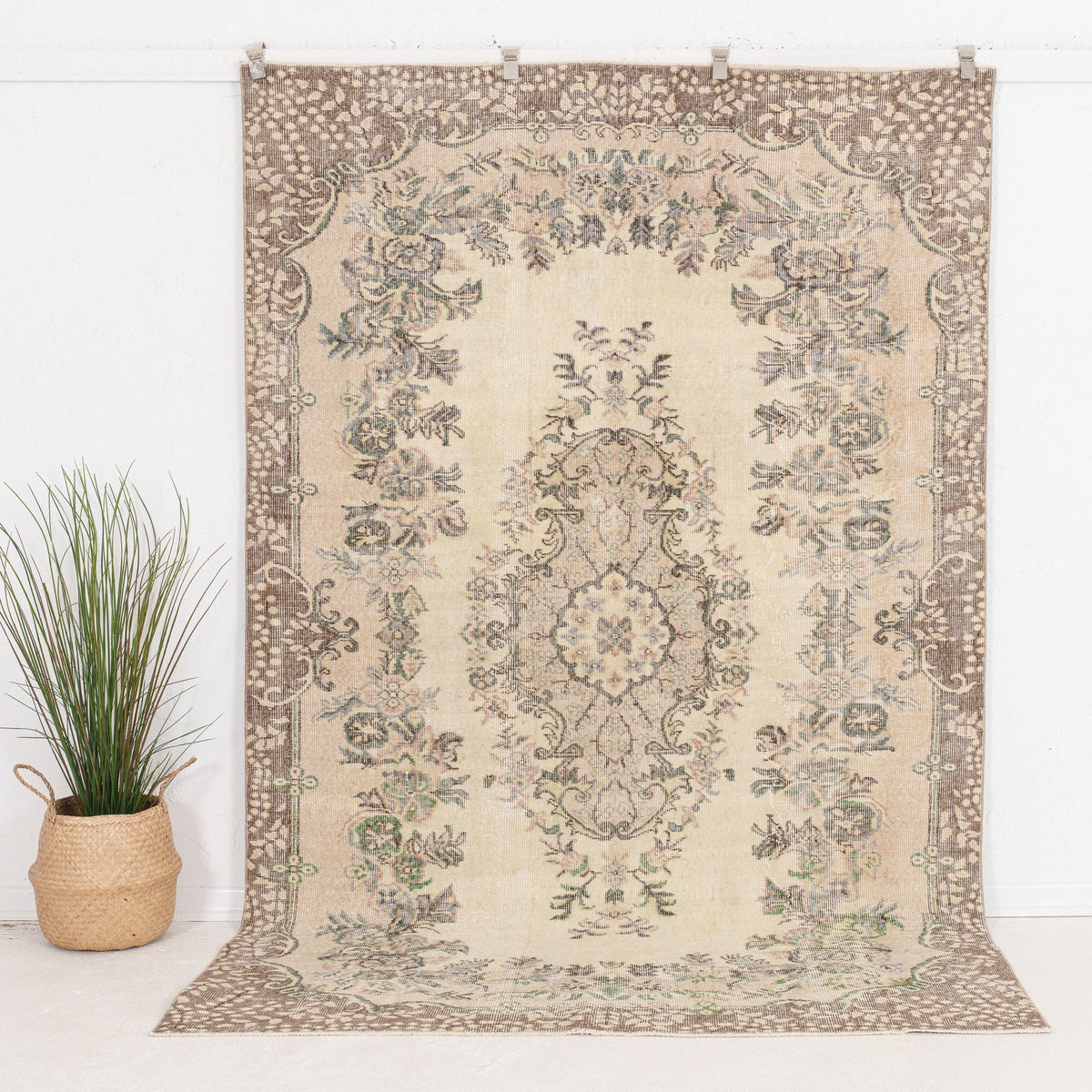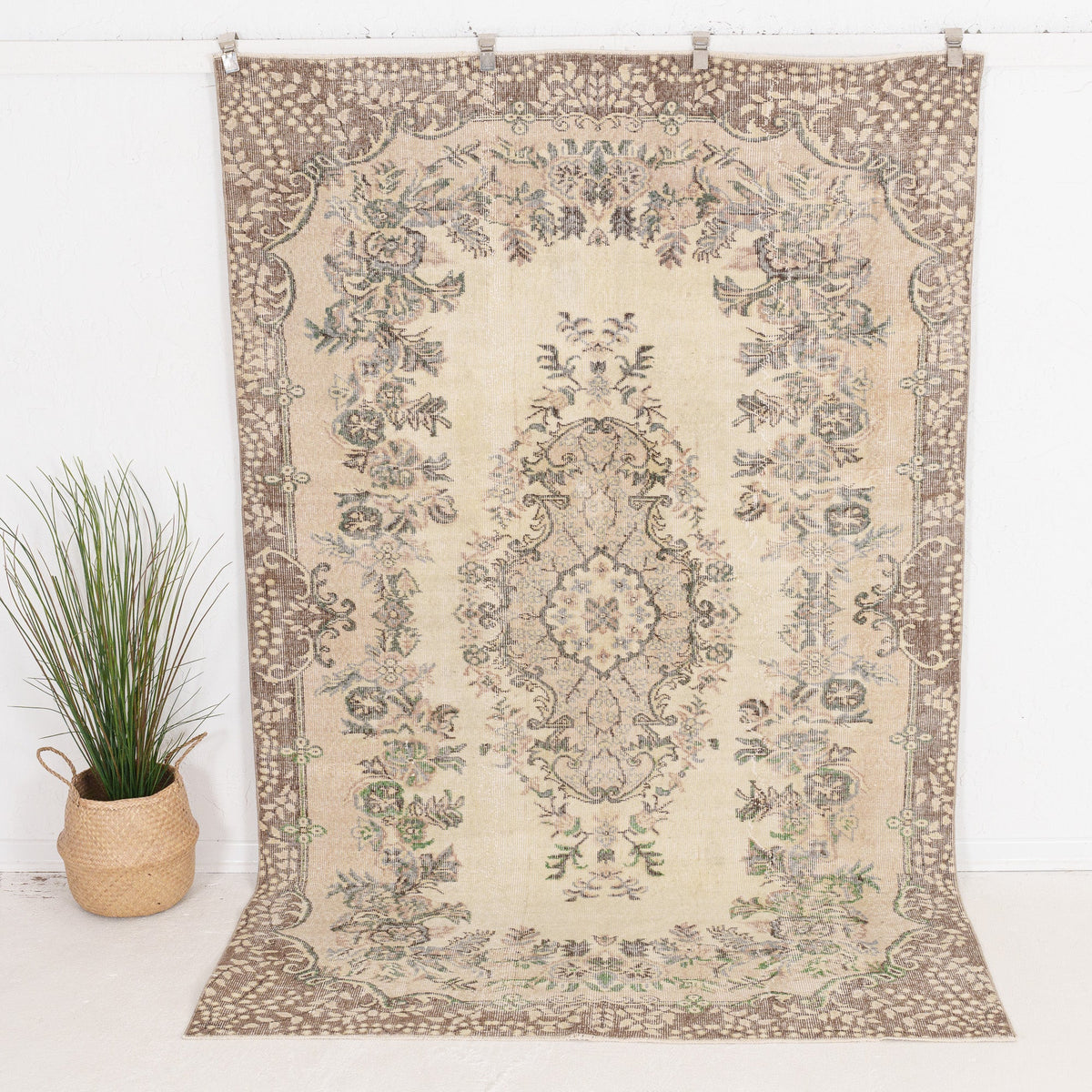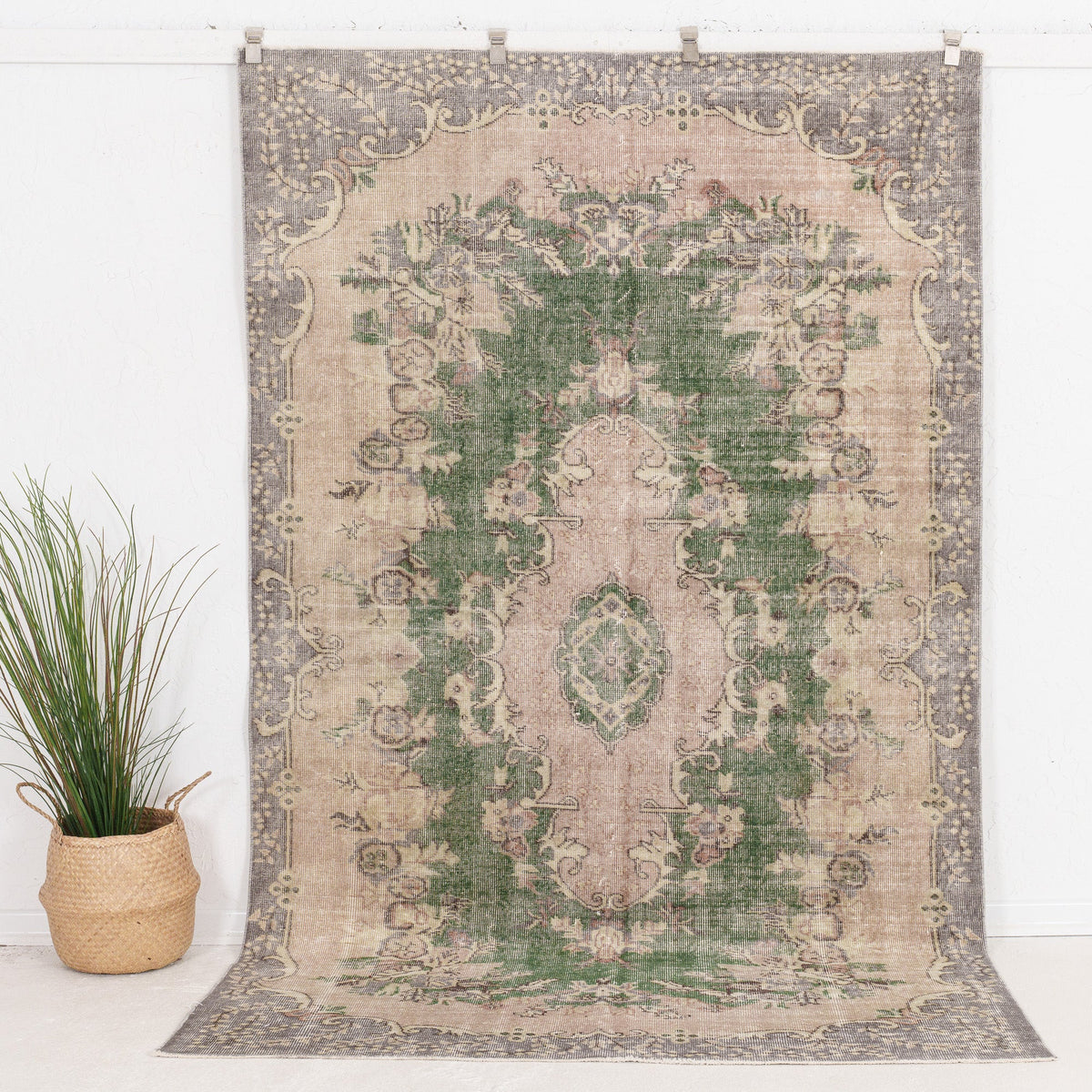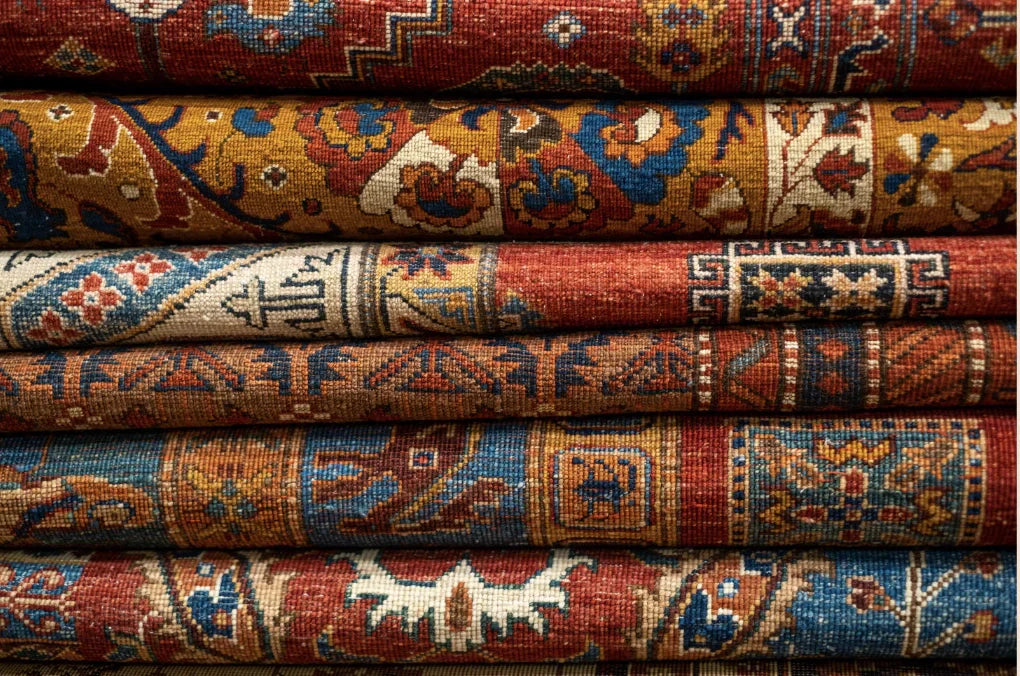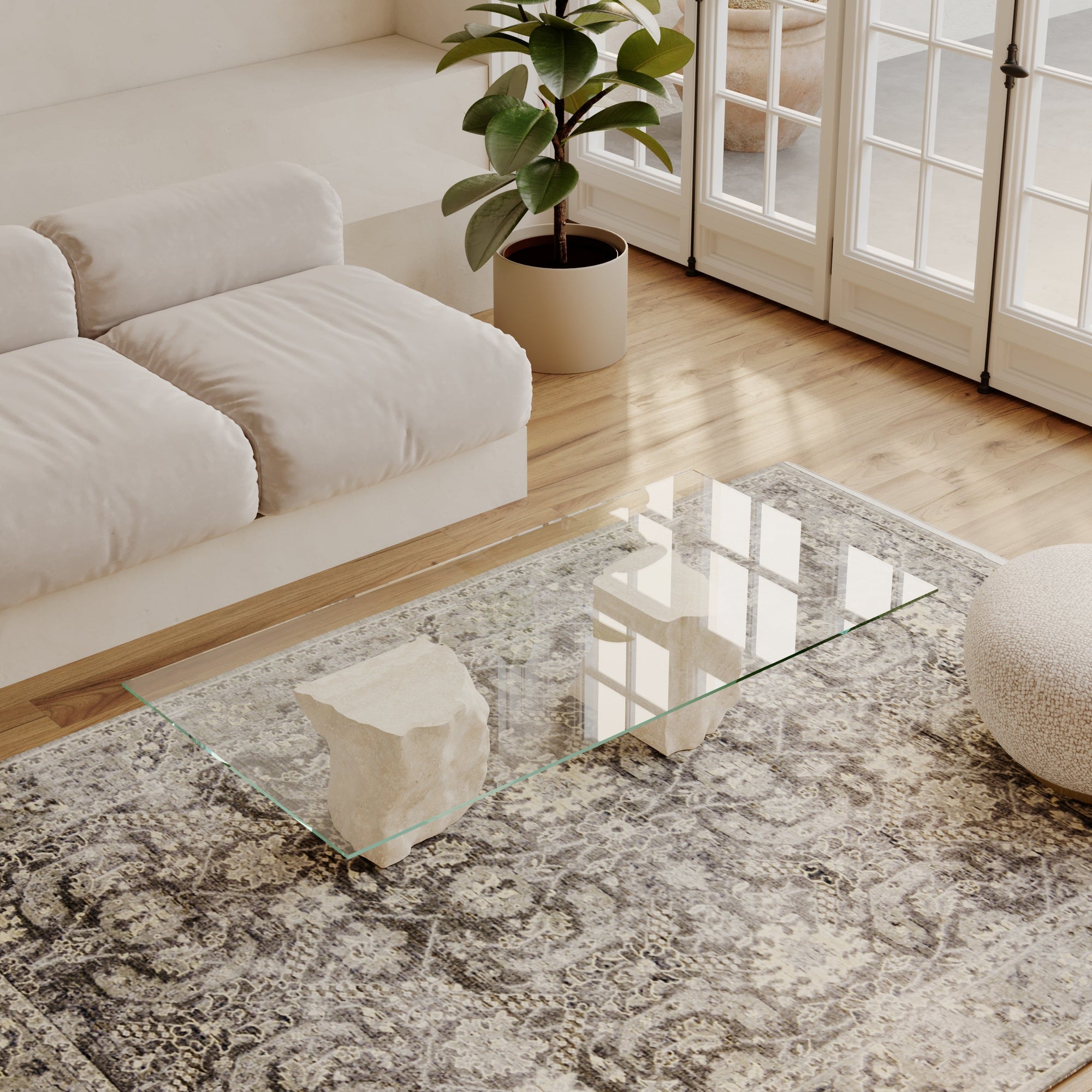Vintage rugs are exceptional pieces of textile art that encapsulate the essence of historical and cultural narratives. With roots extending across the globe from the oriental aesthetics of the Middle East to the rustic charm of European designs, these rugs are typically aged between 20 to 100 years old. Valued for their timeless beauty, unique patterns, rich color palettes, and high-quality materials, vintage rugs become more coveted as they age, often serving as a focal point in various interior design styles. As you delve deeper into the world of vintage rugs, you will explore various aspects such as their history, types, sourcing, care, and decoration tips, each offering fascinating insights into their multifaceted allure.

Types of Vintage Rugs
Delving into the world of vintage rugs, you'll discover an enchanting array of types, each boasting distinctive features, materials, and designs. Vintage rugs can be broadly categorized based on several factors, including their origin, design aesthetics, the materials used, and their manufacturing process. Let's dive deeper into some of the most common types to help you better understand their unique appeal.
The first category to consider is the Oriental rugs, which originated from the Middle East. These rugs are known for their intricate patterns, high-quality materials, and meticulous craftsmanship. They are further divided into subcategories like Persian, Turkish, and Afghan rugs, each with unique design elements and color palettes.
Then, we have European vintage rugs, which exhibit a more rustic charm compared to their Oriental counterparts. They're often defined by simpler, geometric patterns and muted colors. Aubusson, Savonnerie, and Kilim rugs are a few examples in this category.
Another type to consider is the Moroccan rugs, famous for their abstract, tribal designs, and plush texture. Berber rugs, a subcategory, are highly coveted for their striking patterns and warmth.
Lastly, the Navajo rugs from the American Southwest are admired for their bold geometric designs, earthy tones, and durable weave. These rugs represent the Native American culture and are made with high-quality, locally sourced wool.
Each of these types of vintage rugs comes with distinguishing features that make them special. Their diversity in design, material, and style creates a wealth of options for those looking to bring a touch of vintage charm to their spaces.
Color Variations in Vintage Rugs
The mesmerizing color variations found in vintage hand-knotted rugs are one of their most appealing aspects. These palettes, often vibrant and unique, add to the individuality of each rug, and understanding the underlying reasons for these variations enhances appreciation for their intrinsic value.
One factor influencing color variations in vintage rugs is the natural aging process. Over time, colors in these rugs may fade or change, adding to their antique charm. This natural patina often enhances their aesthetic appeal, offering a pleasing contrast of old-world charm and contemporary style.

Another crucial aspect is the intentional dyeing process. Vintage rugs are not just functional pieces but also cultural artifacts, with colors often reflecting the cultural significance or historical context of the region they originated from. For example, in Persian rugs, red could symbolize luck, while blue might represent honesty. Additionally, the use of natural dyes derived from plants, insects, or minerals, often leads to subtle color variations within the same rug, adding to its uniqueness.
Whether it's the warm earth tones of Navajo rugs or the vibrant hues of Moroccan rugs, these color variations tell a fascinating story of the past, the people who made them, and the contexts in which they were crafted. Appreciating the rich color variations in vintage rugs thus deepens our connection to these timeless pieces of art.
Natural Fibers and Dyes Used in Vintage Rugs
An integral part of the vintage rug's allure lies in the use of natural fibers and dyes, which lend these rugs their durability, vibrancy, and charm. This symbiosis between nature and craftsmanship is a testament to the traditional rug-making techniques that have been passed down through generations. As we explore this fascinating realm, we will discuss the various types of natural fibers, such as wool and silk, their unique properties, and their role in creating these rugs. We will also delve into the captivating world of natural dyes, sourced from plants, minerals, and insects, and how they contribute to the splendid color palettes in vintage rugs. Stay tuned as we unravel the secrets of natural fibers and dyes and their essential role in the creation of vintage rugs.

The Wonders of a Natural Fiber: The Role of Wool in Vintage Rug Production
Wool, a versatile and resilient natural fiber, is the cornerstone of vintage rug making. Its use extends from the rustic charm of Navajo rugs to the intricate grandeur of Persian carpets. Besides offering a soft texture that feels delightful underfoot, wool is known for its exceptional durability. This enables vintage rugs made from wool to withstand heavy traffic and the test of time, often outlasting synthetic alternatives.
The impact of wool on color variations in vintage rugs is significant. As a natural fiber, wool has a unique ability to absorb dyes, which results in rich, vibrant colors that age beautifully over time. Additionally, wool from different regions or breeds of sheep can display slight variations in color even before the dyeing process, lending each rug a unique character. The combination of these factors means that wool plays a fundamental role not only in the longevity of vintage rugs, but also in their captivating color variations and overall aesthetic appeal.
Nature's Palette: Plant-Based Dyes and Their Role in Vintage Rug Making
The use of natural, plant-based dyes has been a significant practice in vintage rug making, imbuing these artworks with vibrant hues while maintaining an eco-friendly approach. These dyes are derived from various parts of plants - roots, leaves, bark, or fruits - each offering a unique color palette.
Notable examples of plant-based dyes include indigo, sourced from the leaves of the Indigofera plant, which imparts a beautiful range of blues. Similarly, madder root gives a spectrum of red and orange shades. Other examples include weld for yellow, walnut for brown, and many more.
The dyeing process involves careful preparation, starting with the harvesting of the plant materials, which are then processed to extract the dye. This dye is then used to color the wool fibers, often involving a complex process of boiling, steeping, and rinsing.
Using plant-based dyes comes with its own set of considerations. The quality of the plant material, local soil conditions, and even the climate can affect the color produced. Moreover, each batch of dye might differ slightly, leading to subtle color variations, which add to the unique charm of each rug.
Despite these challenges, the benefits of using natural dyes are plentiful. Not only are they eco-friendly, but they also offer an array of subtle, organic tones that synthetic dyes often struggle to replicate. The warmth and depth they provide enhance the aesthetic appeal of vintage rugs, making each piece a unique testament to the beauty of nature and human craftsmanship.
Animal-Based Dyes and Colors Used in Rug Making
Animal-based dyes have played an integral role in traditional rug making, offering a spectrum of colors that add depth and vibrancy to the woven art. Derived from a variety of creatures such as insects like cochineal and kermes, and mollusks like murex, these dyes have been highly treasured for their ability to produce rich, long-lasting shades.
The extraction process often involved boiling the dried or crushed bodies of these creatures, releasing the pigment-filled dye. These colors could then be applied to the rug fibers, resulting in stunning designs and motifs. For instance, cochineal, a small insect found on prickly pear cacti, is known for producing a brilliant range of reds and pinks, while the Mediterranean mollusk, murex, is famed for its royal purple dye.

The color variations obtained from these animal-based dyes often differed depending on the creature used, the extraction method, and the region in which the rug was made. Artisans also creatively used other animal products such as milk, egg yolk, and bone marrow to create unique pigments, further diversifying the color palette.
A crucial part of the dyeing process is the technique of "mordanting". Mordants are substances that enhance the bond between the dye and the fiber, thereby increasing the color's durability and resistance to fading. This process was especially important for animal-based dyes to ensure the longevity of the rug's vivid colors.
In conclusion, animal-based dyes, with their diverse range and historical significance, add an extra layer of fascination to the story of vintage rug making.
Synthetic Dyes and Colors Used in Rug Making
The advent of synthetic dyes brought a revolutionary shift to the rug-making industry, significantly influencing the colors and design possibilities of vintage rugs. Synthetic dyes are chemically formulated colorants that offer a broader and more consistent range of hues compared to natural dyes. Additionally, they are typically more cost-effective and easier to produce, which contributed to their widespread adoption.
Commonly used synthetic dyes in rug making include aniline and chrome dyes. Aniline dyes, the first synthetic dyes, introduced in the mid-19th century, offered vibrant, consistent colors but were notorious for their tendency to fade. Chrome dyes, introduced in the early 20th century, brought improvements in color fastness and durability, quickly becoming a popular choice.
The introduction of synthetic dyes expanded the overall color palette of rugs, allowing artisans to explore innovative, intricate designs. However, this also led to a departure from traditional, muted tones, with some critics arguing that it compromised the timeless appeal of vintage rugs.
There are potential negative impacts associated with synthetic dyes, such as environmental harm and health concerns due to the chemicals used. However, advancements in dyeing technology and regulations continue to address these issues, aiming to balance the benefits of synthetic dyes with their environmental and health impacts. Despite these challenges, synthetic dyes have undeniably shaped the evolution of rug-making, pushing the boundaries of color and design in the world of vintage rugs.
Regional Differences in Colors of Vintage Rugs
As we continue our exploration into the world of vintage rugs, we delve into the regional differences that define their color palettes. The colors and motifs employed in these rugs are not random; instead, they embody the geographical landscapes, cultural narratives, and historical contexts of the regions they represent. From the vibrant blues and reds of Persian rugs to the earthy tones of Navajo rugs, these color variations offer a fascinating glimpse into the world's diverse cultures and traditions. In the following sections, we will travel across the globe, exploring the distinctive color palettes that characterize different regions' vintage rugs and discovering the stories they tell.

North America
North American vintage rugs are remarkable testimonies to the region's diverse indigenous cultures and nature's bounty. Predominantly made of natural fibers such as wool, cotton, and silk, these rugs embody the connection between the artisans and their natural surroundings. The use of native flora and fauna for natural dyes imparts these rugs with warm earthy tones and muted shades of red, brown, green, and yellow. This paints a vivid picture of the North American landscape, from the arid desert terrains to the lush forests.
Synthetic dyes only entered the scene in the mid-20th century, meaning most North American vintage rugs bear the unique character of traditional dyeing techniques. The influence of indigenous designs is evident, with nature-inspired motifs and tonal designs reflecting local lore and symbolism. A notable example is the Navajo rug, with its intricate geometric patterns and organic colors. In sum, North American vintage rugs offer a rich, textured story of the region's cultural heritage and natural splendor, encapsulated in their unique color palettes and designs.
South America
South American vintage rugs are renowned for their striking colors and distinctive aesthetic that sets them apart from rugs from other regions. These rugs often display a unique blend of indigenous and colonial influences, reflecting the region's rich historical and cultural tapestry.
Predominantly using natural fibers such as alpaca and llama wool, South American rugs often incorporate vibrant plant-based dyes, resulting in a dazzling array of reds, blues, yellows, and greens. These lively colors are often used in bold, geometric designs, with motifs drawn from Incan and other indigenous cultural symbolism.
Furthermore, South American rugs often feature tonal or graphic designs, which can range from complex patterns to more abstract depictions of local flora and fauna. This diversity in design is another testament to the vast cultural richness of the region.
Each rug tells a story - a story of the people who made it, the land it came from, and the time it was created. This cultural significance makes South American vintage rugs more than just home decor; they are pieces of history, woven in vibrant colors and intricate patterns, that bring the legacy of South American cultures to life.
East Asia
The journey through regional color variations in vintage rugs now leads us to East Asia, a region known for its profound cultural heritage and artistic mastery. From the meticulous silk rugs of China to the indigo-dyed cotton rugs of Japan, East Asian vintage rugs present a fascinating blend of colors, materials, and techniques. Each region carries its distinct color palette and motif styles, mirroring the local landscapes, beliefs, and traditions. In the subsequent sections, we will delve into the unique characteristics of East Asian vintage rugs, shedding light on their color variations and the significance behind them.

South Asia
The artistic tradition of rug-making in South Asia, encompassing countries such as India, Pakistan, and Afghanistan, has produced some of the world's most exquisite hand-knotted rugs. Characteristically rich in color, vintage rugs from this region often feature vibrant reds, deep blues, and warm earth tones, resulting from the use of natural dyes extracted from local plants and minerals.
Over time, however, the availability of certain natural dyes has decreased, causing notable shifts in the color palette of South Asian rug-making. With the decline of certain dye sources and the introduction of synthetic dyes, the hues seen in these rugs have evolved, leading to a wider variety of shades and designs. Despite these changes, the rugs maintain their striking aesthetic, with each change in color palette marking a new chapter in the region's rich rug-making history.
In discussing South Asian vintage rugs, it is essential to understand these changes, as they not only affect the rugs' aesthetics but also provide insight into the region's changing cultural and economic landscape.
The North Atlantic Region
Vintage rugs from the North Atlantic region, encompassing countries like Iceland, Greenland, Norway, and the Faroe Islands, present a color spectrum heavily influenced by the area's unique natural environment. The natural fibers used in these rugs, primarily sheep's wool, exhibit a range of colors from the sheep's natural variety, including whites, blacks, greys, and browns.
Animal-based dyes play a significant role in creating color variations in North Atlantic rugs. In areas where plant life is scarce, especially in the colder climates of Greenland and Iceland, artisans historically relied more heavily on animal-based dyes. For instance, the kermes insect was used for red, while woad was used for blue.
Furthermore, the climate and geography of the North Atlantic region impacted the color palette of its rugs. In regions with less sunlight and harsher weather conditions, rugs tend to have more muted and cooler colors to reflect the environment.
Understanding the influence of natural fibers and animal-based dyes is essential when exploring the color variations of vintage rugs from the North Atlantic region. These elements not only determine the rugs' aesthetic but also tell a story about the region's climate, resources, and cultural practices.
Europe
Europe has long been a central hub in the global tapestry of rug-making, with a rich history of craftsmanship that is reflected in the distinct color variations of its vintage rugs. Countries like Spain, Bulgaria, and Turkey are particularly renowned, each producing exquisite hand-knotted rugs that boast a unique color palette and style.
Often crafted from a combination of wool and silk, European vintage rugs exhibit an array of color variations that set them apart from their counterparts in other regions. Turkey, for example, is famous for its vintage rugs showcasing rich, deep red tones, while Spain's vintage rugs typically feature lighter, pastel shades, reflecting the sun-drenched landscapes of the Iberian Peninsula.
Moreover, Europe's rug-making tradition has been significantly influenced by the advent of synthetic dyes, particularly during the Industrial Revolution. The introduction of these dyes brought about a new range of vibrant, consistent colors, significantly expanding the color palette available to European rug-makers.
Therefore, when examining European vintage rugs, it is important to consider not only the materials and dyes used but also the time period and location. Each of these factors contributes to the color variations in these rugs, adding to their aesthetic appeal and historical significance.

In conclusion, vintage rugs, with their striking colors and intricate designs, are timeless pieces of art that encapsulate the cultural heritage and natural landscape of their regions. From North America's earthy tones to South Asia's vibrant hues, each rug reflects the unique combination of natural fibers, dyes, and craftsmanship available to its creators. Whether it's the indigo blues of East Asian rugs, the subtle pastels of European designs, or the bold colors of South American rugs, these color variations add to their charm and intrigue. While the introduction of synthetic dyes has introduced new color possibilities, it's the traditional techniques that continue to enchant us, revealing a story of the people and the land that produced them. As you delve into the world of vintage rugs, may this guide serve as a colorful map to explore their history and diversity, and appreciate the hands that weaved these remarkable narratives.
For those who are keen on exploring the world of vintage rugs and their incredible color variations, Kuden Rugs is your go-to destination. At Kuden, you will find a curated collection of vintage rugs from around the globe, each piece carrying its unique history and vibrant hues. Our commitment to quality and authenticity ensures that every rug you choose will be a colorful testament to the age-old traditions and skilled craftsmanship that went into its making. Embark on your journey with Kuden Rugs, and bring home a piece of history that brightens your space with its timeless beauty.

